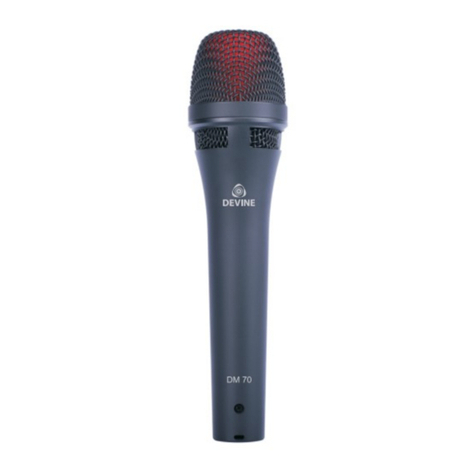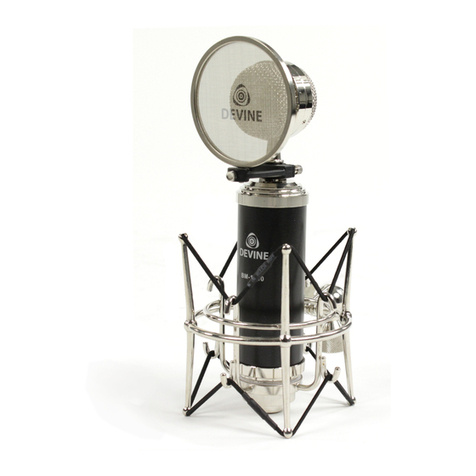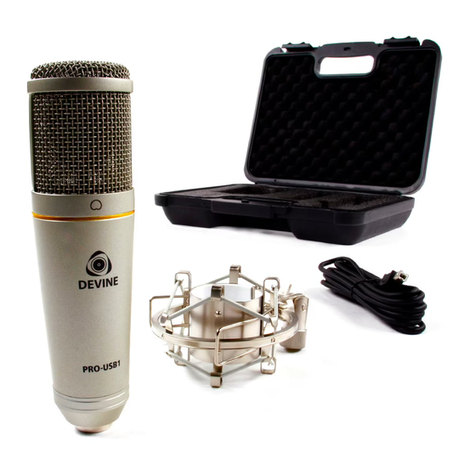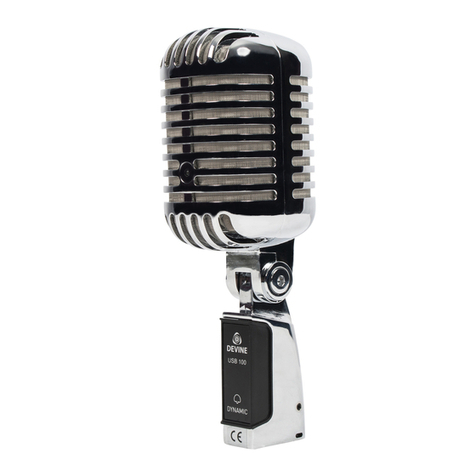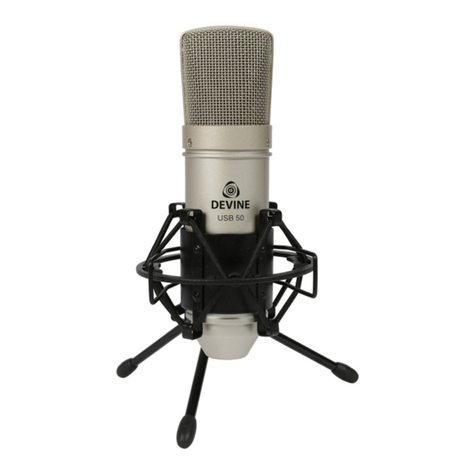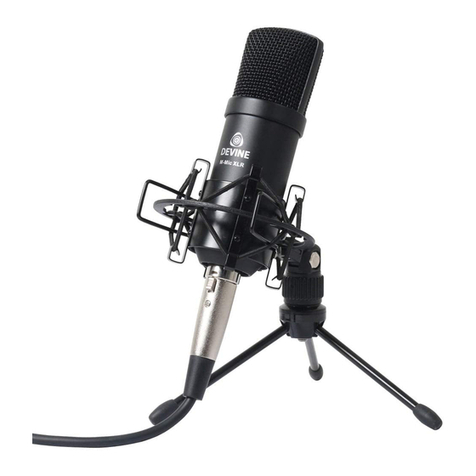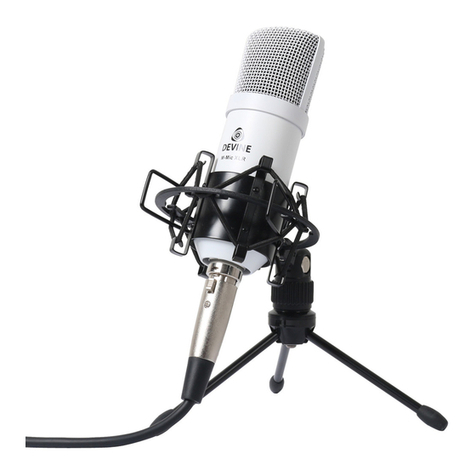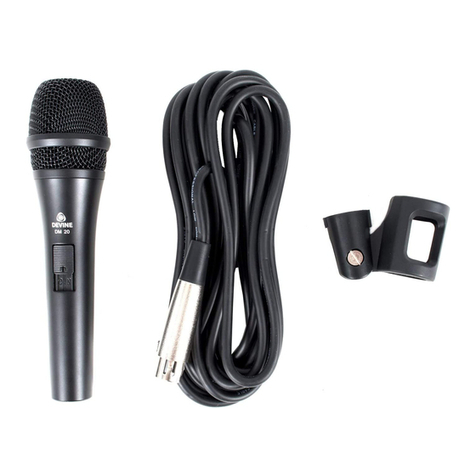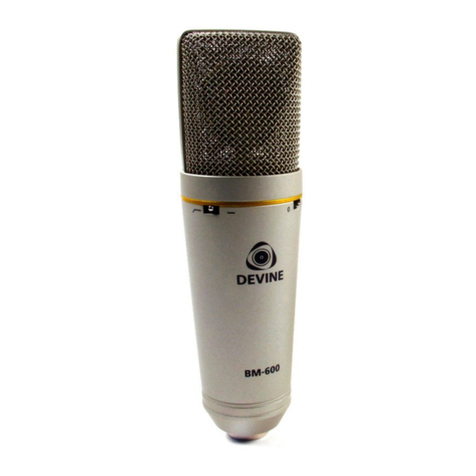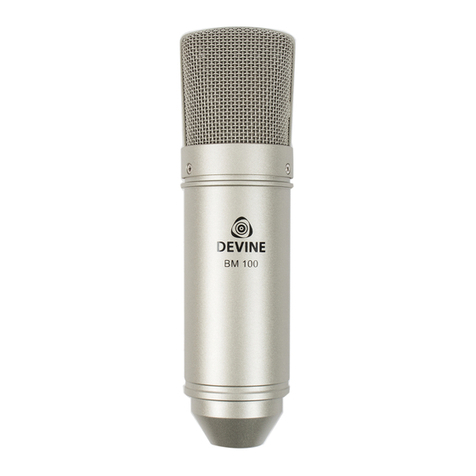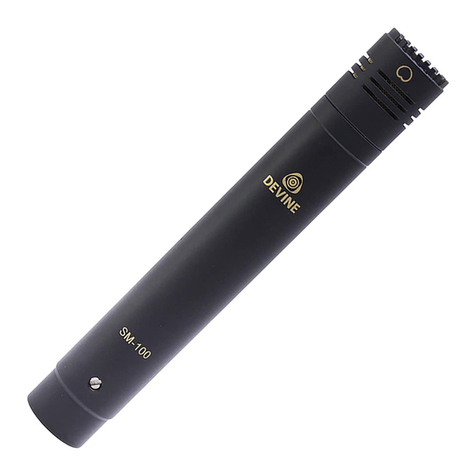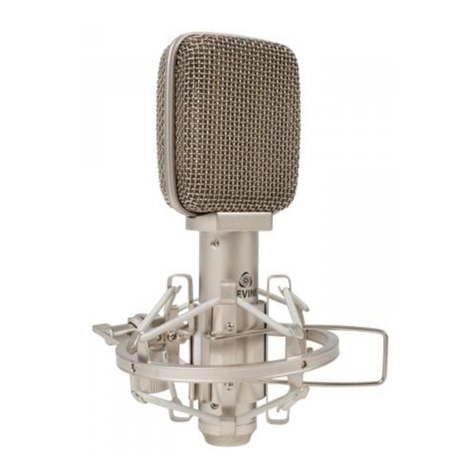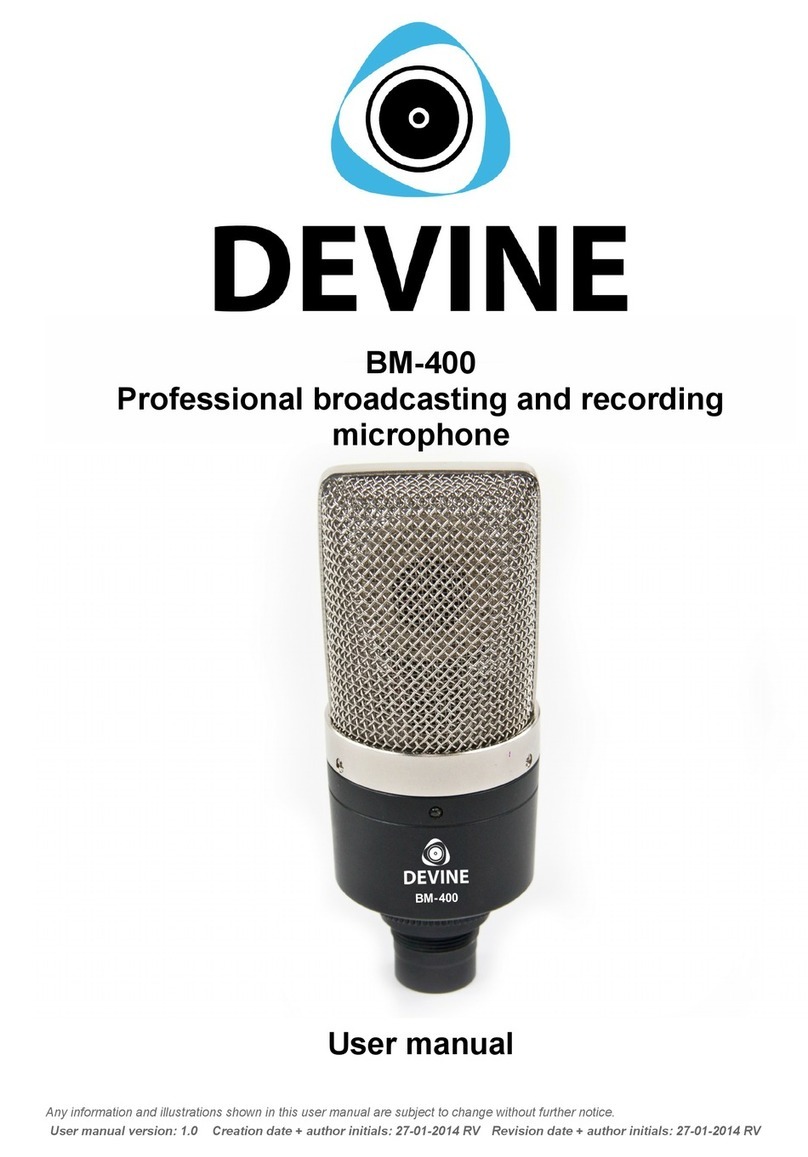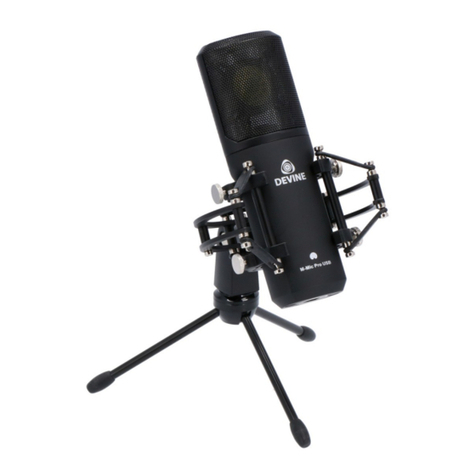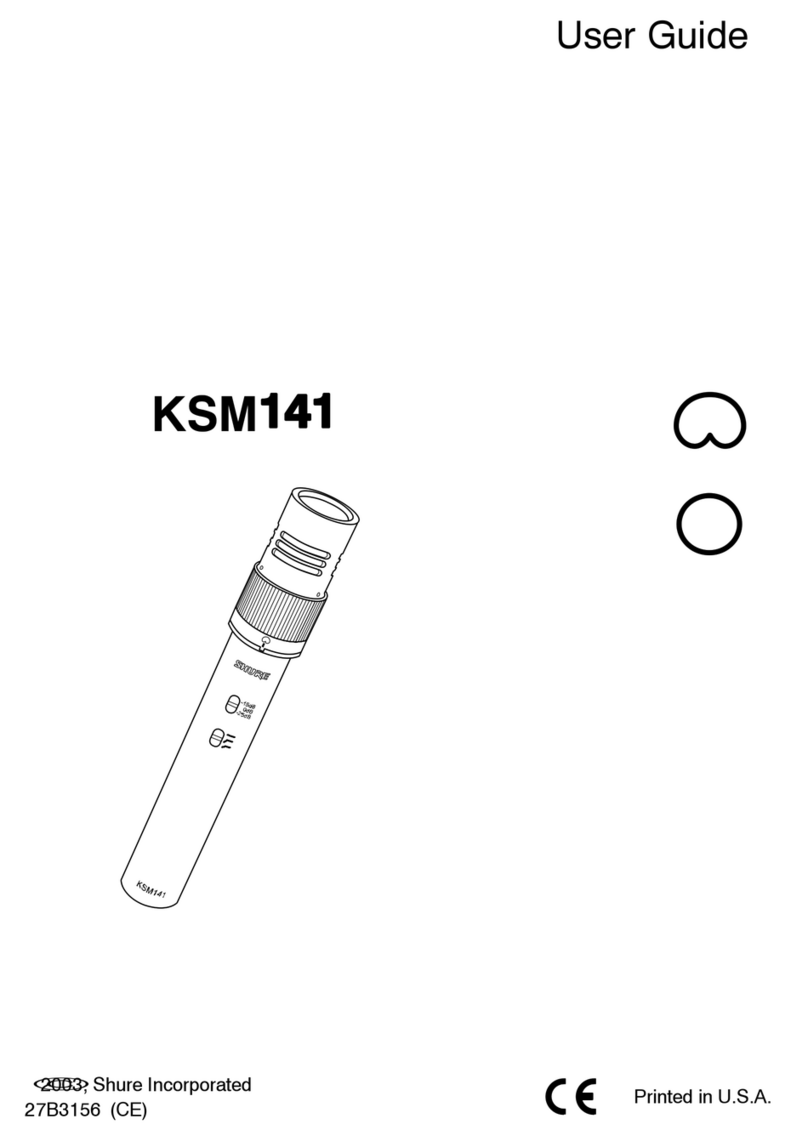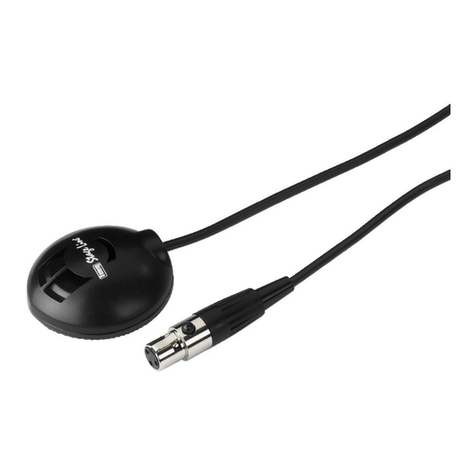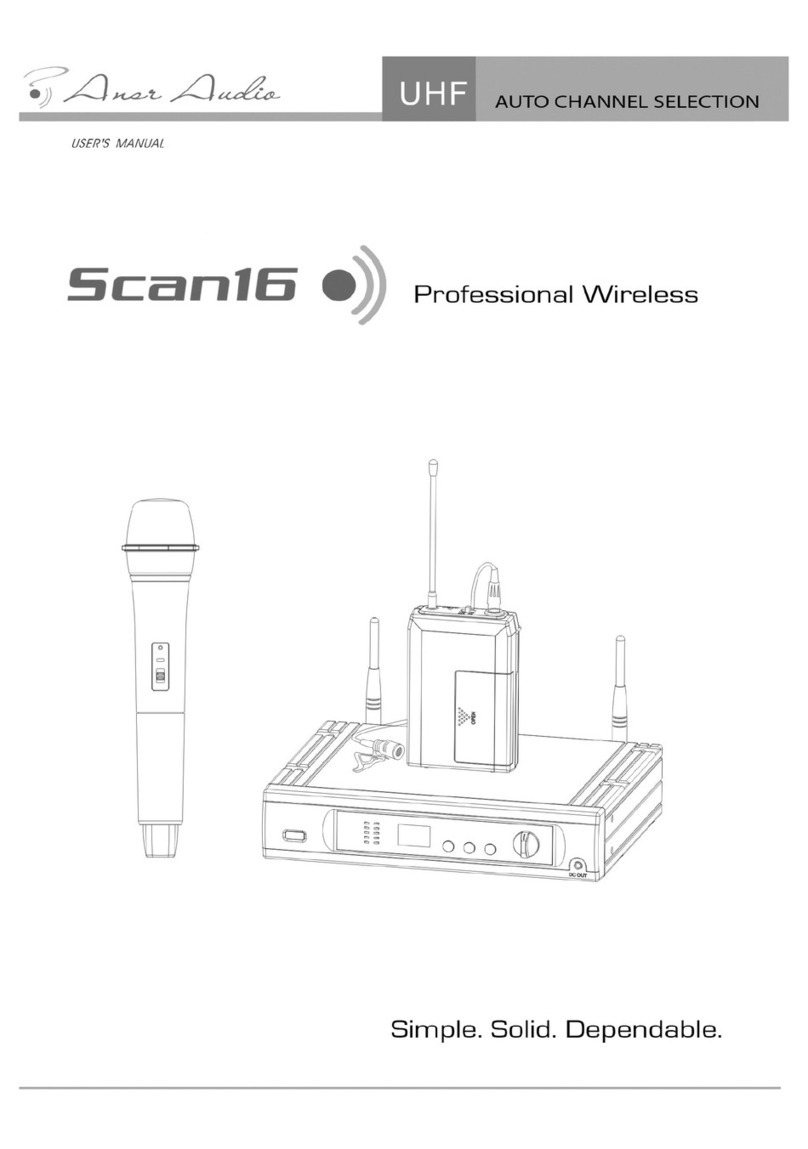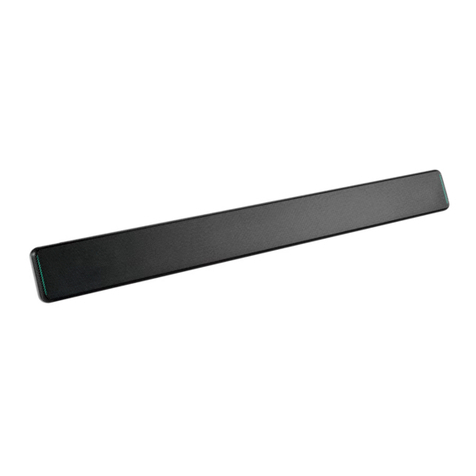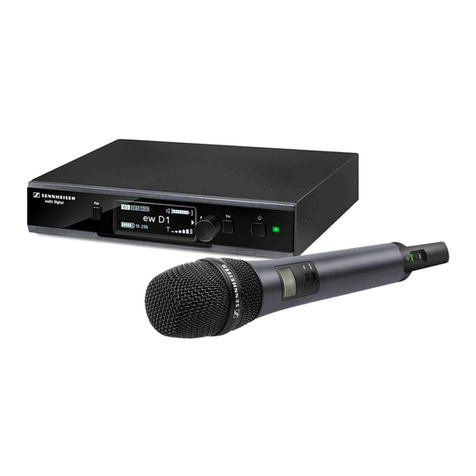Use of the microphone
The Devine BM-500 studio microphone is suitable for most recording applications in your studio.
The Devine BM-500 has an unidirectional (cardioid) polar pattern. This is the most used polar pattern for
most vocal and instrument recording applications. Most of the sound is captured at the front of the
microphone, hile reducing pickup of sound at the sides and especially the rear. This is the best choice
hen you use (studio)monitors directly behind the microphone, to avoid feedback problems hen using live
monitoring.
The BM-500 microphone is equipped ith gold plated diaphragm capsule, to improve the sound to a arm,
pleasant character. Most of the body ork has a gold-coloured finish to match perfectly ith the sound
characteristics.
The polar pattern and frequency response of the microphone are visible in the figures belo :
The BM-500 microphone has a slight boost in the higher frequencies (around 10 kHz) for clear vocal
recording.
IMPOR AN : Phantom power
This large-diaphragm studio condenser microphone requires +48V phantom po er from a PA-mixer, studio-
mixer, audio-interface or phantom po er supply. Consult the manual of your equipment or contact your local
dealer hen in doubt if your equipment is capable of providing a +48V voltage.
This microphone ill not ork properly hen there is no proper +48V voltage activated. Al ays check this if
you suspect that your microphone might be damaged or broken.
Protect your microphone:
This Devine microphone is equipped ith very sensitive electronics to provide optimal audio performance.
Make sure the microphone is not exposed to severe shocks, collision, drops from high altitude or any
situations that may cause permanent damage. Improper use of the microphone is not covered by arranty.
Al ays transport the microphone in the original package, or in a flightcase ith proper foam inlay.
Transporting the microphone ithout proper protection may cause permanent damage and ill not be
covered by arranty.
Positioning and using the included accessories:
The BM-500 includes a shock mount and indscreen for optimal audio performance. Devine recommends to
al ays use the included shock mount, to prevent audio distortion and background or handling noise. The
included indscreen is optional and is mostly used hen recording outdoor. The indscreen breaks up
airflo , hich prevents distortion.
Any information and illustrations shown in this user manual are subject to change without further notice.
User manual version: 1.0 Creation date + author initials: 27-01-2014 RV Revision date + author initials: 27-01-2014 RV
